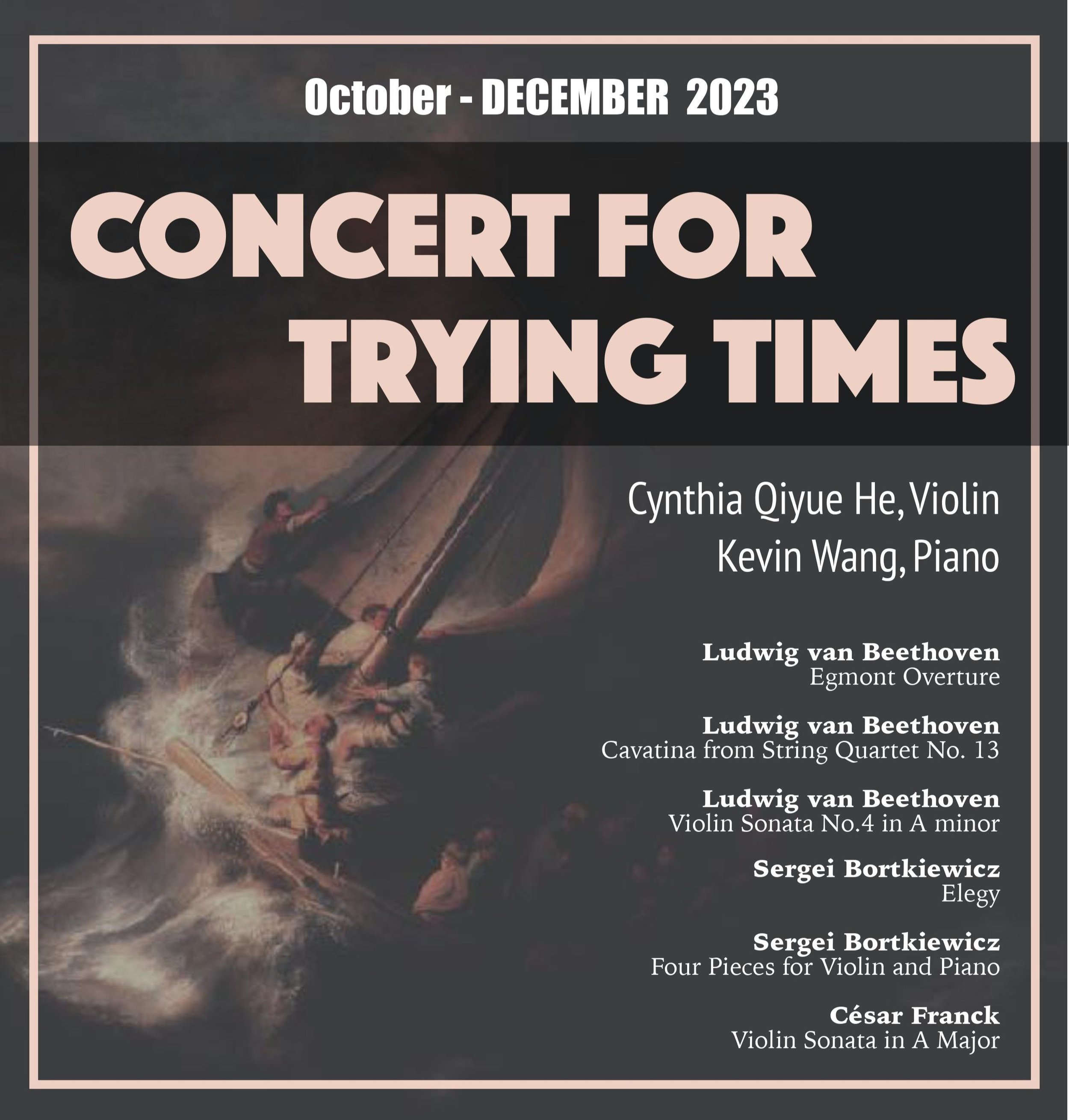Program Notes
Beethoven’s Three Periods
The Middle Period — Overture to Egmont
In 1802, Beethoven wrote a letter to his brother that he never sent. This document, now known as the Heiligenstadt Testament, was Beethoven wrestling with thoughts of suicide and hopelessness due to his failing health and growing deafness. At the end of the letter, he resolved to continue living and create music with the utmost artistic integrity. Thus began his heroic phase. The Overture to Goethe’s play Egmont is one of the last works belonging to Beethoven’s heroic phase. It is the shortest and most potent piece to paint a complete portrait of Beethoven during this era.
The Late Period — Cavatina
Beethoven’s last years were not only spent in complete deafness, but also with recurring episodes of various diseases. The hero in his middle phase had died, but Beethoven was still alive; as a result, his music became spiritual (and sometimes grotesque) to the point of confounding his contemporaries. At the center of this whole enigma lies his 5 late string quartets. The Cavatina is a tender movement from one of these late quartets, arranged for violin and piano. It means simple song.
The Early Period — Violin Sonata No. 4
Before Beethoven became his own ideal hero, he was a fearless explorer in the world of music who sought to expand the technical and expressive capabilities of instrumental music. The fact that his sonatas were mainly written for private gatherings (and not public concerts) made their inventiveness and boldness all the more shocking. The fourth violin sonata must have come to Beethoven over many a sleepless night, when his imagination could roam free. Between the wild outer movements, there lies a light-hearted piece in the center, where the piano and violin are in dialogue, as if they are lovers.
Sergei Bortkiewicz
For a composer whose works sound like a direct musical descendant of Chopin, the fact that Bortkiewicz was a survivor of both world wars is astounding. The 20th century was known for composers who were abandoning tonality and writing works that were harsh and dissonant, sometimes to reflect on wartime turbulence. In the midst of this remarkable change, Bortkiewicz’s music reflected his affection towards 19th-century values, as well as his overall optimism in life. However, his life was full of unbearable suffering and poverty, which made his music even more miraculous, and a genuine find in the classical repertoire.
None of the descriptions belonged to Franck himself.
Franck’s Violin Sonata
César Franck was a French composer who was a forerunner in writing music that was “cyclical”. Cyclical music contains identical themes and melodies that appear in every single movement, often in sharply contrasting styles to signify some sort of journey that the piece goes through. It is not important to be able to hear the recurring themes in this work, but only to know that they are there. Below is a personal interpretation with which we approached this major work.
None of the descriptions belonged to Franck himself.
Movement I — Innocence
The piece begins with a swaying melody that is ripe and full. This theme swells up to several euphoric climaxes. Shades of darkness are easily overcome. The only way to know that this movement symbolizes innocence is through hindsight...
Movement II — Turmoil
This movement is a completely disturbing change of pace that also happens to be one of the most brilliantly virtuosic pieces ever written for the medium. The music is angry, fierce and relentless to the point of hysteria. There are sporadic moments of quiet desperation, with another eruption always looming in the distance.
Movement III — Lament
Rising from the utter chaos of the previous movement, the violin gives a frenzied monologue (with the piano providing limited support) that, for a while, fails to find any emotional footing. After a searing climax, the music finally enters some form of order, with the violin expressing its grief in a simple but heartbreaking manner, alternating between quiet melancholy and intense outburst. The movement ends with no hope in sight.
Movement IV — Healing and Gratitude
Time heals all wounds. After the grief subsides, you suddenly feel like yourself again. The melody of gratitude is one of the sweetest ever written; the piano and violin both sing this melody in the form of a round (one starting slightly later than the other). Amidst this miraculous feeling of thanksgiving, there is one more battle that needs to be fought. But now, with newfound resolve, triumph can only be inevitable.
